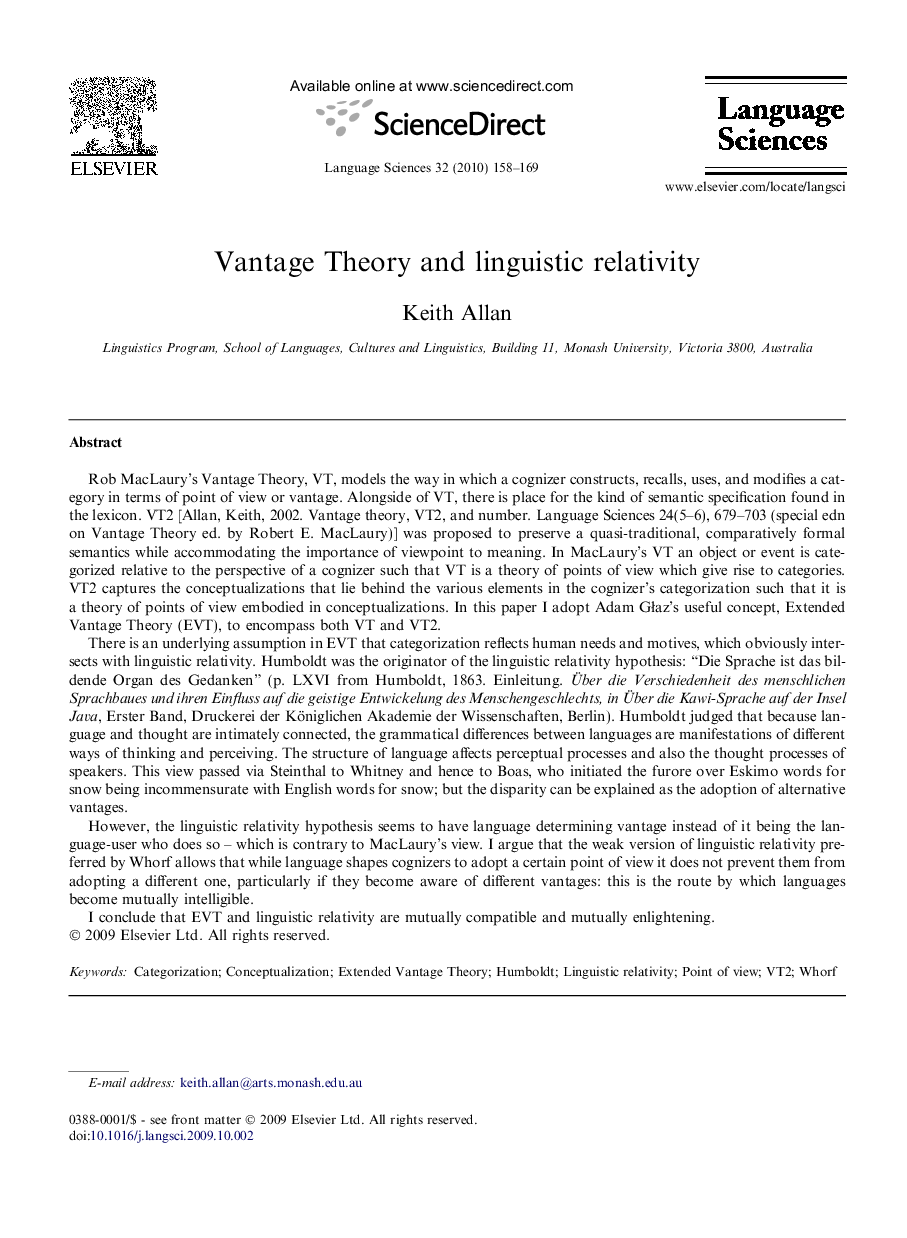| کد مقاله | کد نشریه | سال انتشار | مقاله انگلیسی | نسخه تمام متن |
|---|---|---|---|---|
| 1103446 | 953741 | 2010 | 12 صفحه PDF | دانلود رایگان |

Rob MacLaury’s Vantage Theory, VT, models the way in which a cognizer constructs, recalls, uses, and modifies a category in terms of point of view or vantage. Alongside of VT, there is place for the kind of semantic specification found in the lexicon. VT2 [Allan, Keith, 2002. Vantage theory, VT2, and number. Language Sciences 24(5–6), 679–703 (special edn on Vantage Theory ed. by Robert E. MacLaury)] was proposed to preserve a quasi-traditional, comparatively formal semantics while accommodating the importance of viewpoint to meaning. In MacLaury’s VT an object or event is categorized relative to the perspective of a cognizer such that VT is a theory of points of view which give rise to categories. VT2 captures the conceptualizations that lie behind the various elements in the cognizer’s categorization such that it is a theory of points of view embodied in conceptualizations. In this paper I adopt Adam Głaz’s useful concept, Extended Vantage Theory (EVT), to encompass both VT and VT2.There is an underlying assumption in EVT that categorization reflects human needs and motives, which obviously intersects with linguistic relativity. Humboldt was the originator of the linguistic relativity hypothesis: “Die Sprache ist das bildende Organ des Gedanken” (p. LXVI from Humboldt, 1863. Einleitung. Über die Verschiedenheit des menschlichen Sprachbaues und ihren Einfluss auf die geistige Entwickelung des Menschengeschlechts, in Über die Kawi-Sprache auf der Insel Java, Erster Band, Druckerei der Königlichen Akademie der Wissenschaften, Berlin). Humboldt judged that because language and thought are intimately connected, the grammatical differences between languages are manifestations of different ways of thinking and perceiving. The structure of language affects perceptual processes and also the thought processes of speakers. This view passed via Steinthal to Whitney and hence to Boas, who initiated the furore over Eskimo words for snow being incommensurate with English words for snow; but the disparity can be explained as the adoption of alternative vantages.However, the linguistic relativity hypothesis seems to have language determining vantage instead of it being the language-user who does so – which is contrary to MacLaury’s view. I argue that the weak version of linguistic relativity preferred by Whorf allows that while language shapes cognizers to adopt a certain point of view it does not prevent them from adopting a different one, particularly if they become aware of different vantages: this is the route by which languages become mutually intelligible.I conclude that EVT and linguistic relativity are mutually compatible and mutually enlightening.
Journal: Language Sciences - Volume 32, Issue 2, March 2010, Pages 158–169